Want to know more about the Best Physics Schools In the US and make an informed decision? Here is a good place to start.
Get ready to blast off into the world of physics, where the laws of the universe come to life! If you’re ready to unleash your inner Einstein, then listen up, because we’re about to unveil the top physics schools.
From the halls of Ivy League institutions to the laboratories of groundbreaking physics research centers, we’ve scoured the globe for the best of the best. So hold on tight, because this is going to be one exhilarating ride!
Please note that schools are selected based on our criteria (at the end of the article), ranked by the latest acceptance rate.
Table of Contents
#25. University of Colorado Boulder
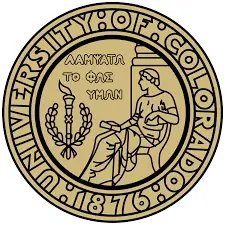

- Acceptance rate: 80%
- Average entry score: 1170-1390 SAT or 25-31 ACT
- Student-to-faculty ratio: 17 to 1
- Estimated cost of attendance (tuition and fees): $30,452-$57,702
- Average earning potential for graduates: $42,374 (College Factual)
The University of Colorado Boulder’s Department of Physics creates an environment that spurs curiosity and fosters innovation.
With an emphasis on research and experimentation, students are encouraged to explore the mysteries of the universe—pushing its boundaries in order better understand it.
The department boasts world-renowned faculty who are dedicated to mentoring and inspiring the next generation of physicists.
Through opportunities for collaboration and interdisciplinary study, students are equipped with the skills and knowledge needed to make groundbreaking discoveries.
Source: University of Colorado
#24. University of Minnesota Twin Cities


- Acceptance rate: 73%
- Average entry score: 1330-1500 SAT or 27-32 ACT
- Student-to-faculty ratio: 17 to 1
- Estimated cost of attendance (tuition and fees): $121,690
- Average earning potential for graduates: $55,327 (College Factual)
The University of Minnesota’s physics programs offer a unique and comprehensive approach to physics education. Through interdisciplinary research and collaboration with faculty, students are provided with cutting-edge opportunities to engage in groundbreaking research.
The program boasts state-of-the-art facilities and offers specialized tracks tailored to students’ interests. These tracks include condensed matter physics and particle physics, among others.
Overall, the University of Minnesota’s physics programs provides students with the tools and knowledge to succeed in the ever-evolving field of physics.
Source: School of Physics and Astronomy
#23. University of Wisconsin Madison


- Acceptance rate: 60%
- Average entry score: 1300-1480 SAT or 28-32 ACT
- Student-to-faculty ratio: 18 to 1
- Estimated cost of attendance (tuition and fees): $27,484-$55,372
- Average earning potential for graduates: $45,170 (College Factual)
UW-Madison Physics Department is a renowned academic institution that offers both undergraduate and graduate programs in physics. The department is well-known for its research in a broad range of fields, including astrophysics, condensed matter physics, and particle physics.
Faculty members are experts in their respective fields. They are dedicated to providing high-quality education to their students. Students have access to state-of-the-art research facilities, and they are encouraged to participate in research projects.
The department’s commitment to education and research has made it one of the top-ranked physics departments in the world.
Source: UW-Madison Physics
#22. University of Illinois at Urbana-Champaign
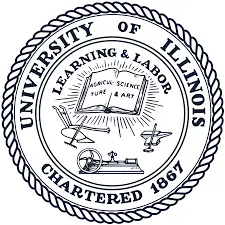
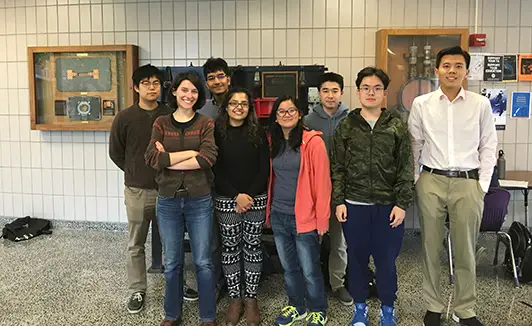
- Acceptance rate: 60%
- Average entry score: 1210-1470 SAT or 27-33 ACT
- Student-to-faculty ratio: 21 to 1
- Estimated cost of attendance (tuition and fees): $33,060-$50,510
- Average earning potential for graduates: $85,500 (UIUC)
At the University of Illinois at Urbana-Champaign, a world-renowned physics program is the result of several key factors. Exceptional faculty, including award winners and members of prestigious scientific organizations, contribute significantly to the program’s success.
In addition, the program places a strong emphasis on interdisciplinary research and collaborations with other institutions and departments. Students benefit from state-of-the-art facilities which provide access to advanced technology.
The program also offers students a range of opportunities to gain hands-on experience in research and prepare for successful careers in physics.
Source: The Grainger College of Engineering
Similar articles like this:
- 25 Best Political Science In The US
- 25 Best Social Sciences Schools In The US
- 25 Best Veterinary Schools In The US
- 10 Highest Paying Astronomy Jobs To Consider
- 25 Best Astronomy Schools In The US
#21. Ohio State University
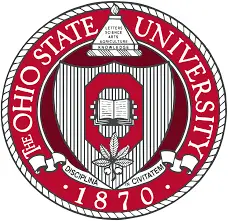
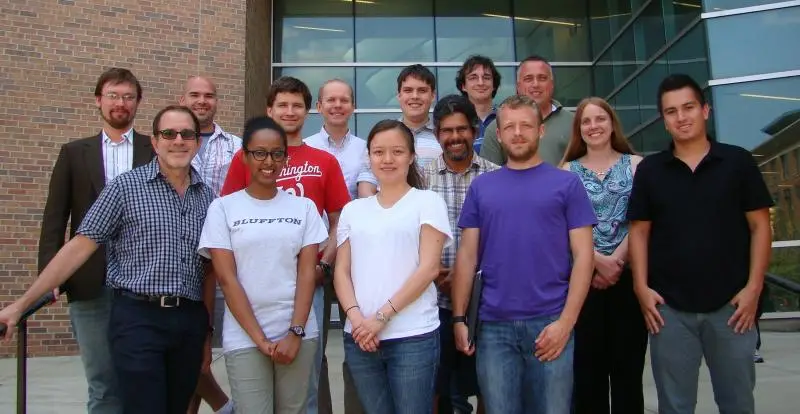
- Acceptance rate: 57%
- Average entry score: 1250-1440 SAT or 26-32 ACT
- Student-to-faculty ratio: 18 to 1
- Estimated cost of attendance (tuition and fees): $29,368-$52,451
- Average earning potential for graduates: $45,021 (College Factual)
The Ohio State University offers a comprehensive physics program that prepares students for successful careers in a range of fields.
Through hands-on learning and cutting-edge research opportunities, students gain a deep understanding of the fundamental principles governing the natural world.
The program boasts a strong return on investment, with graduates earning an average starting salary of $65,000 and a mid-career salary of $120,000, making it an excellent choice for students looking to maximize their earning potential.
Source: Department of Physics
#20. Pennsylvania State University
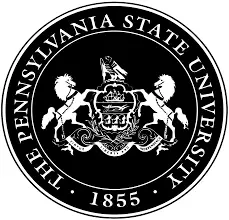
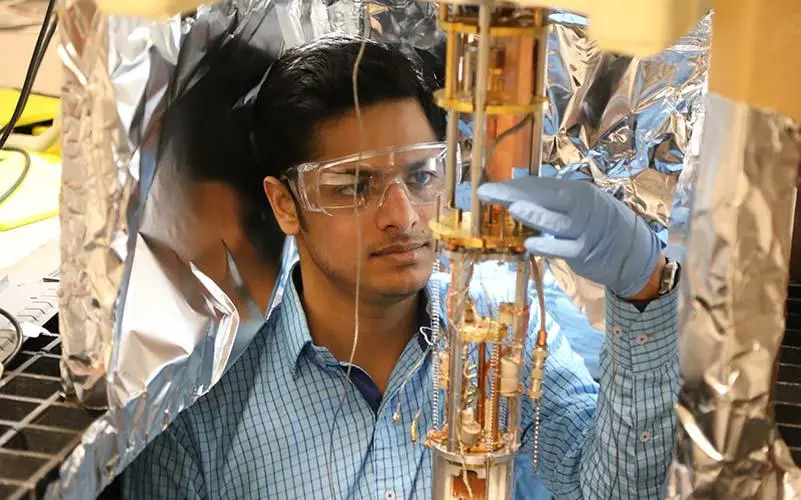
- Acceptance rate: 55%
- Average entry score: 1200-1400 SAT or 26-32 ACT
- Student-to-faculty ratio: 14 to 1
- Estimated cost of attendance (tuition and fees): $36,484-$54,062
- Average earning potential for graduates: $27,900 (College Factual)
Penn State’s Eberly College of Science offers a comprehensive education in physics. These programs provide opportunities for research in areas such as astrophysics, condensed matter physics, and particle physics.
With access to state-of-the-art research facilities and a highly accomplished faculty, students at Eberly College of Science receive a top-notch education and hands-on experience in cutting-edge research.
Source: Eberly College of Science
#19. University of Washington Seattle
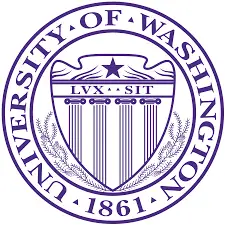
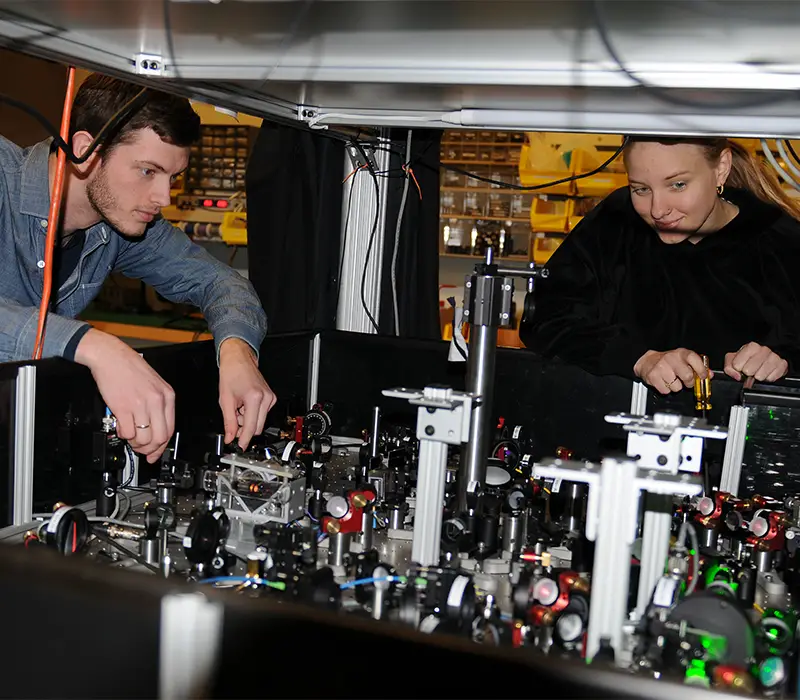
- Acceptance rate: 54%
- Average entry score: 1220-1470 SAT or 29-34 ACT
- Student-to-faculty ratio: 9 to 1
- Estimated cost of attendance (tuition and fees): $30,640-$58,470
- Average earning potential for graduates: $38,470 (College Factual)
With a focus on both education and research, the department boasts a team of renowned physicists committed to uncovering new discoveries and developing innovative technologies.
Students at the University of Washington’s Department of Physics receive comprehensive training in fundamental physics principles and cutting-edge research techniques.
This way, students can expect to be prepared for a wide range of careers in physics, including teaching, research and development.
Source: University of Washington Department of Physics
#18. University of Maryland College Park


- Acceptance rate: 52%
- Average entry score: 1280-1470 SAT or 30-34 ACT
- Student-to-faculty ratio: 18 to 1
- Estimated cost of attendance (tuition and fees): $10,955-$50,000
- Average earning potential for graduates: $48,534 (College Factual)
With research facilities that are cooler than liquid nitrogen and labs that are more high-tech than a spaceship, you’re guaranteed to have a blast.
The faculty members are out-of-this-world brilliant and are always ready to inspire and guide you on your path to greatness. Whether you’re into theoretical or experimental physics, you’ll be in good hands.
Sources: UMD Physics
Similar articles like this:
- 25 Best Information Technology Schools In The US
- 25 Best Zoology Schools In The US
- 25 Best Journalism Schools In The US
#17. University of Texas at Austin
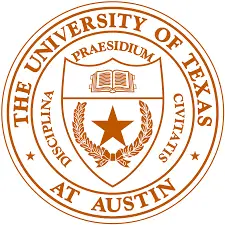

- Acceptance rate: 32%
- Average entry score: 1230-1500 SAT or 29-34 ACT
- Student-to-faculty ratio: 16 to 1
- Estimated cost of attendance (tuition and fees): $28,928-$57,512
- Average earning potential for graduates: $46,620 (College Factual)
UT Austin boasts a top-ranked Department of Physics, which offers exceptional research opportunities and cutting-edge coursework in the study of plasma physics, quantum phenomena, and advanced physics topics.
The department is home to renowned faculty who conduct groundbreaking research. They also provide students with unparalleled access to knowledge and resources.
Plus, UT Austin’s location in the thriving city of Austin, Texas, offers students a vibrant and diverse community.
Source: UT Austin’s College of Natural Sciences
#16. University of California Santa Barbara
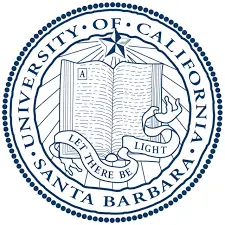
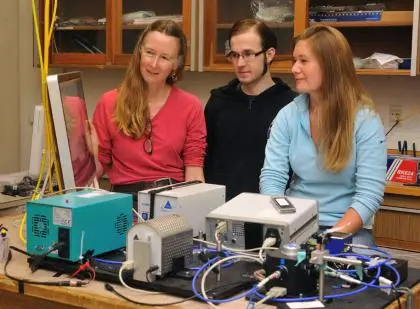
- Acceptance rate: 29%
- Average entry score: 26-31 ACT
- Student-to-faculty ratio: 17 to 1
- Estimated cost of attendance (tuition and fees): $37,415-$67,169
- Average earning potential for graduates: $49,863 (College Factual)
UC Santa Barbara provides a world-class education for aspiring physicists, preparing them for successful careers.
The faculty of experts expose students to cutting-edge research and the latest advancements.
UC Santa Barbara’s broad-based curriculum ensures that students receive a comprehensive education. On the other hand, the personalized attention and friendly faculty create a supportive learning environment.
Research opportunities abound for students, allowing them to get hands-on experience and contribute to groundbreaking discoveries.
Source: UC Santa Barbara
#15. University of Michigan Ann Arbor
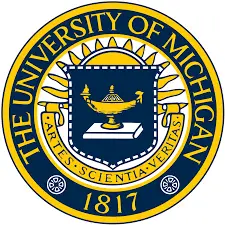
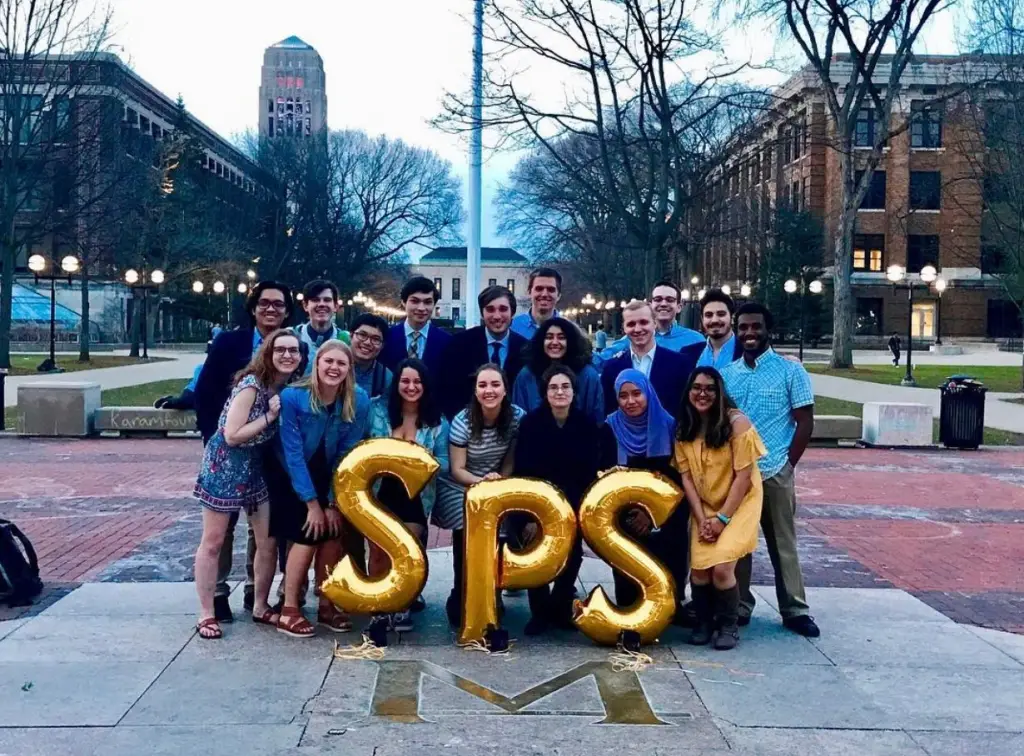
- Acceptance rate: 20%
- Average entry score: 1360-1530 SAT or 31-34 ACT
- Student-to-faculty ratio: 15 to 1
- Estimated cost of attendance (tuition and fees): $32,272-$69,326
- Average earning potential for graduates: $42,728 (College Factual)
The University of Michigan’s physics program is like a well-crafted cocktail that blends theory and experimentation to create a potent mix of scientific knowledge.
With facilities that would make even Einstein envious, students have access to the latest and greatest in research tools. The program’s faculty members are like rockstars of physics.
Students get to jam with them on cutting-edge research projects. If physics is your jam, the University of Michigan’s program is like a concert you won’t want to miss.
Source: University of Michigan
#14. University of California Berkeley

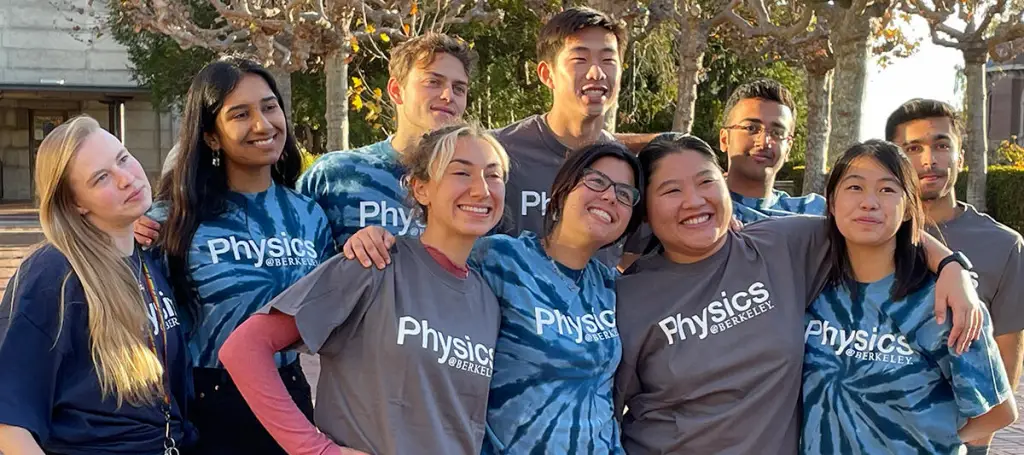
- Acceptance rate: 14%
- Average entry score: 1415 SAT
- Student-to-faculty ratio: 17 to 1
- Estimated cost of attendance (tuition and fees): $41,878-$71,632
- Average earning potential for graduates: $45,800 (College Factual)
UC Berkeley’s physics program is highly sought-after by students due to its innovative use of technology and resources.
Online simulations and virtual labs allow students to observe physics concepts firsthand, instead of looking at drawings or reading about them in a textbook.
Plus, the use of interactive software allows students to visualize complex physics concepts in a more intuitive way, making it easier to grasp and apply these concepts.
All of these factors contribute to making UC Berkeley a top choice for those seeking a comprehensive and cutting-edge physics education.
Source: Berkeley Physics
What’s it like to study at UC Berkeley?
Similar articles like this:
- 25 Best Schools For Soil Sciences In The US
- 25 Best Art History Schools In The US
- 25 Best Schools For Aerospace Engineering In The US
#13. University of California Los Angeles
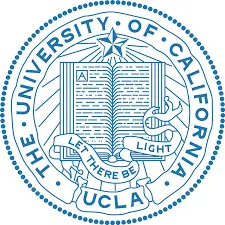
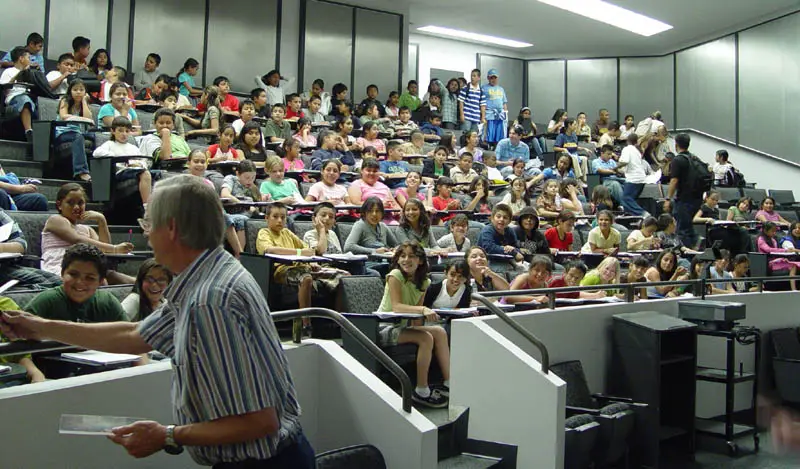
- Acceptance rate: 11%
- Average entry score: 1290-1520 SAT
- Student-to-faculty ratio: 18 to 1
- Estimated cost of attendance (tuition and fees): $16,847-$31,949
- Average earning potential for graduates: $42,865 (College Factual)
UCLA’s degree programs in the accelerator, elementary, nuclear, and particle physics are designed to provide students with the knowledge and skills they need to become experts in their field.
Students learn about the fundamental laws of the universe, the structure of matter, and the behavior of particles at the atomic and subatomic levels. They also gain hands-on experience with state-of-the-art equipment and techniques used in research labs.
Graduates of these programs can go on to careers in research and development, teaching, science policy, and consulting.
Source: UCLA Physics & Astronomy
#12. Cornell University
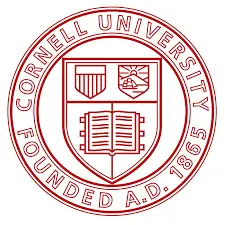
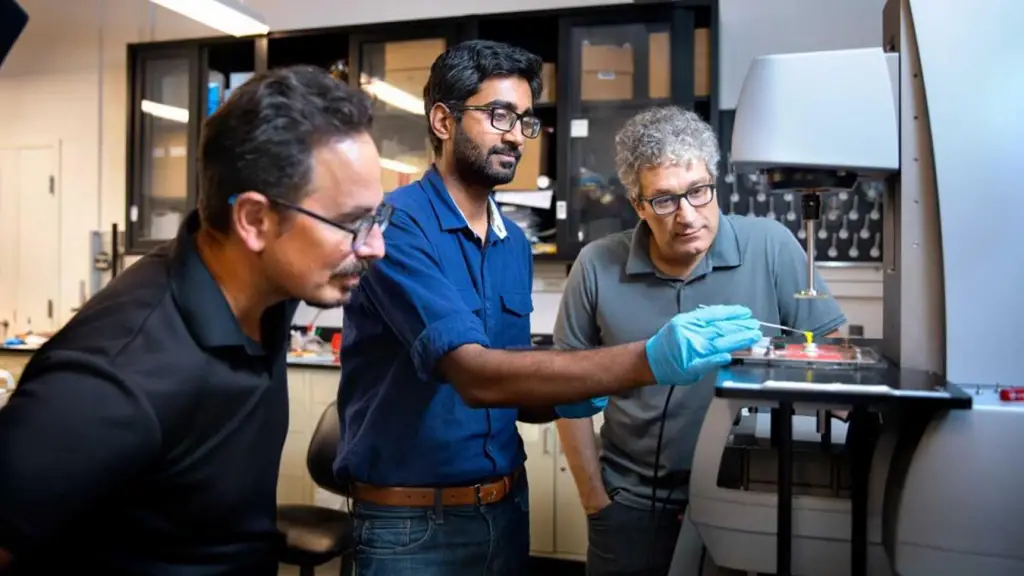
- Acceptance rate: 11%
- Average entry score: 1450-1560 SAT or 33-35 ACT
- Student-to-faculty ratio: 9 to 1
- Estimated cost of attendance (tuition and fees): $78,992
- Average earning potential for graduates: $38,630 (College Factual)
Cornell University’s Physics Department is renowned for its remarkable facilities, including state-of-the-art laboratories, advanced computing resources, and cutting-edge research equipment.
The department’s commitment to unrivaled physics education is evident in its rigorous undergraduate and graduate programs. This provides students with a comprehensive understanding of physics principles and hands-on research experience.
With a focus on excellence in both research and education, Cornell Physics is a world leader in the field of physics.
Source: Cornell Physics
#11. University of Chicago
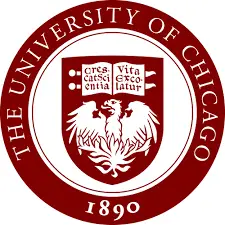

- Acceptance rate: 7%
- Average entry score: 1510-1580 SAT or 33-35 ACT
- Student-to-faculty ratio: 5 to 1
- Estimated cost of attendance (tuition and fees): $85,536
- Average earning potential for graduates: $52,578 (College Factual)
Boasting a world-class faculty, the UChicago Department of Physics is a top-ranked institution. The environment is highly conducive to learning, with state-of-the-art facilities and a culture of academic excellence.
Students benefit from a collaborative and supportive community, with ample opportunities for research, internships, and networking. Faculty members are deeply invested in their student’s success, offering personalized guidance throughout their academic careers.
The Department of Physics at UChicago is a hub of innovation and discovery, attracting some of the brightest minds in the world.
Source: UChicago Department of Physics
What’s it like to study at the University of Chicago?
#10. Northwestern University
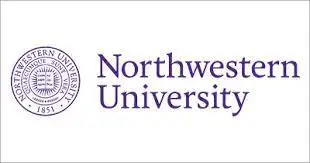

- Acceptance rate: 7%
- Average entry score: 1440-1550 SAT or 33-35 ACT
- Student-to-faculty ratio: 6 to 1
- Estimated cost of attendance (tuition and fees): $62,391
- Average earning potential for graduates: $72,610 (Grad Reports)
Northwestern University’s physics program is renowned for its world-class faculty and cutting-edge research opportunities. Students in the program benefit from small class sizes, personalized attention, and access to state-of-the-art facilities.
What sets Northwestern apart is the incredible value it offers. The program is consistently ranked among the top in the country, yet tuition rates remain competitive. Students can rest assured that they receive a top-notch education without breaking the bank.
Source: Weinberg College of Arts & Sciences
Similar articles like this:
- 25 Best Schools For Business Management Studies In The US
- 25 Best Schools For Programming In The US
- 25 Best Commerce Schools In The US
#9. Duke University

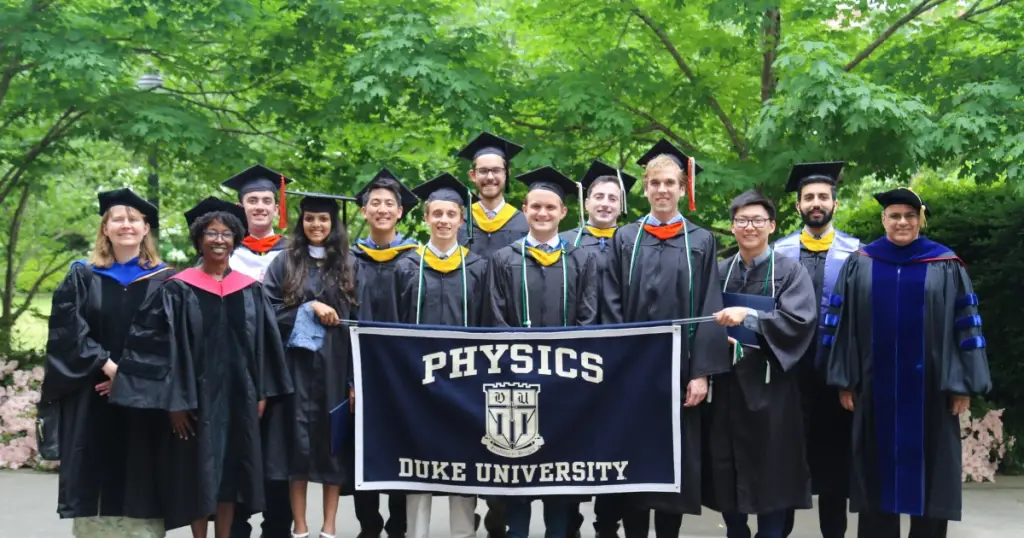
- Acceptance rate: 6%
- Average entry score: 1480-1570 SAT or 33-35 ACT
- Student-to-faculty ratio: 8 to 1
- Estimated cost of attendance (tuition and fees): $84,517
- Average earning potential for graduates: $50,440 (Grad Reports)
Duke University’s physics programs boast an exceptional team of award-winning faculty members who are at the forefront of cutting-edge research.
From studying the fundamental laws of nature to exploring the mysteries of the universe, the Physics department at Duke is dedicated to pushing the boundaries of knowledge in the field.
With a strong emphasis on interdisciplinary collaboration and state-of-the-art facilities, students have the opportunity to engage in groundbreaking research and gain invaluable experience in the field of physics.
Source: Duke University Department of Physics
#8. University of Pennsylvania

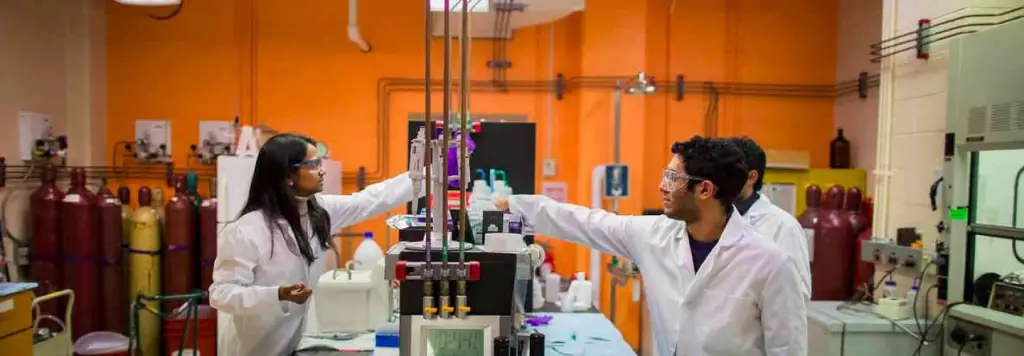
- Acceptance rate: 6%
- Average entry score: 1460-1570 SAT or 33-35 ACT
- Student-to-faculty ratio: 7 to 1
- Estimated cost of attendance (tuition and fees): $65,790
- Average earning potential for graduates: $77,720 (Grad Reports)
With a focus on both theoretical and experimental physics, students are provided with a comprehensive education that prepares them for several careers.
The program boasts a distinguished faculty of experts in various fields of physics, as well as state-of-the-art research facilities and opportunities for hands-on experience.
Graduates from the program have gone on to achieve great success in their fields, solidifying the program’s reputation as a top choice for physics education.
Source: UPenn Physics
#7. Yale University

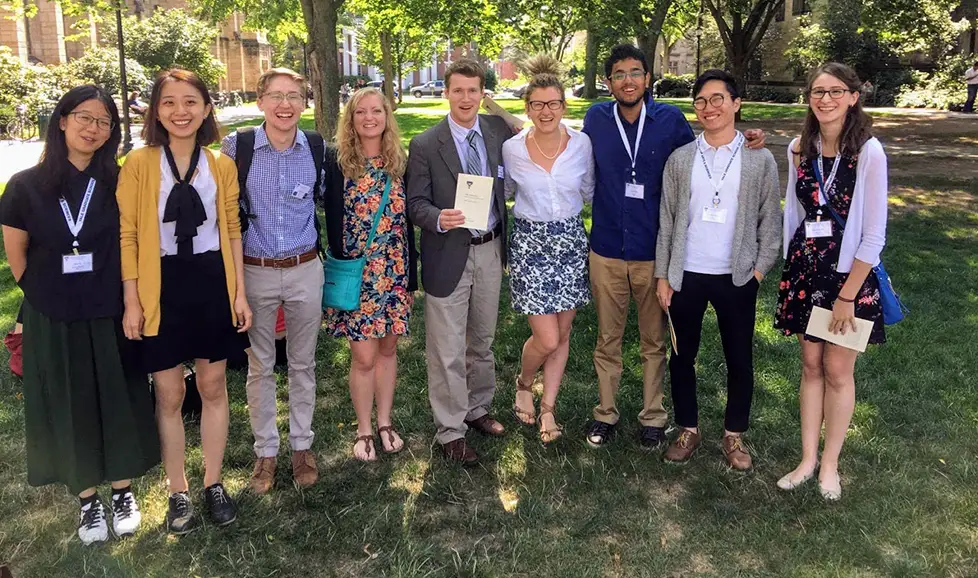
- Acceptance rate: 5%
- Average entry score: 33-35 ACT
- Student-to-faculty ratio: 6 to 1
- Estimated cost of attendance (tuition and fees): $84,525
- Average earning potential for graduates: $63,201 (Glassdoor)
Renowned for its groundbreaking research and innovative teaching, the Yale Physics Department boasts a long history of excellence. Students who enroll in its programs have the opportunity to explore cutting-edge topics in physics, astrophysics, and quantum mechanics.
The department places a strong emphasis on providing hands-on experience, allowing students to work alongside faculty members on research projects that provide valuable skills and insights.
Additionally, the department offers a range of resources and support, including access to state-of-the-art facilities and leading experts in the field.
Source: Yale Physics Department
#6. Princeton University


- Acceptance rate: 4%
- Average entry score: 1570 SAT
- Student-to-faculty ratio: 5 to 1
- Estimated cost of attendance (tuition and fees): $78,490
- Average earning potential for graduates: $91,750 (Grad Reports)
Princeton University is renowned for its exceptional physics programs, recognized as one of the best in the world.
The undergraduate program offers a rigorous curriculum, spanning topics from classical mechanics to quantum physics, and provides opportunities for research and collaboration with faculty.
At the graduate level, Princeton’s Department of Physics offers cutting-edge research opportunities in fields such as astrophysics, particle physics, and condensed matter physics.
Source: Princeton Physics
What’s it like to study at Princeton University?
Similar articles like this:
#5. Columbia University


- Acceptance rate: 4%
- Average entry score: 1440-1570 SAT or 34-35 ACT
- Student-to-faculty ratio: 6 to 1
- Estimated cost of attendance (tuition and fees): $85,000
- Average earning potential for graduates: $47,538 (Glassdoor)
Students prefer Columbia University’s Department of Physics because of its exceptional reputation for academic excellence, world-class research facilities, and highly experienced faculty.
The department offers a wide range of programs, including undergraduate, graduate, and Ph.D. degrees in physics, as well as unique programs in engineering and applied Physics.
Graduates of the program are highly sought after by leading organizations in academia, industry, and government agencies, making Columbia University’s Department of Physics a top choice for students pursuing a career in physics.
Source: Columbia University
#4. California Institute of Technology
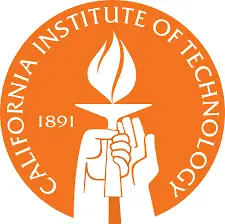
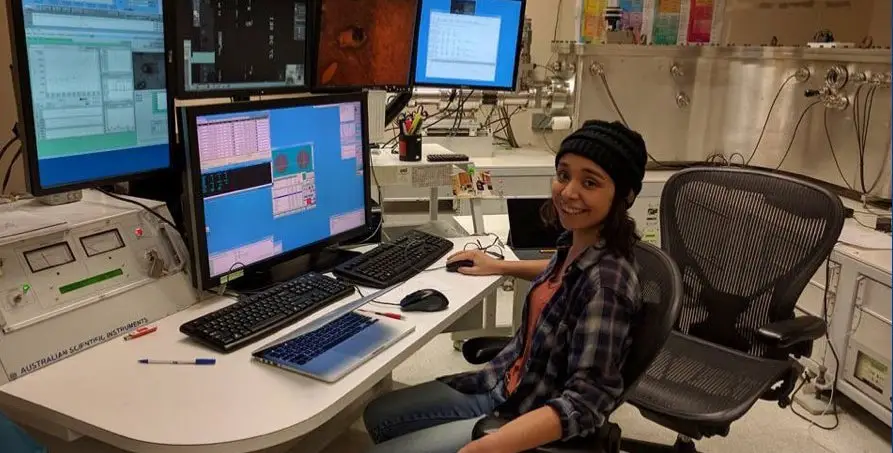
- Acceptance rate: 4%
- Average entry score: 1530-1560 SAT
- Student-to-faculty ratio: 3 to 1
- Estimated cost of attendance (tuition and fees): $83,598
- Average earning potential for graduates: $52,281 (Glassdoor)
Caltech’s physics degree programs provide a rigorous and comprehensive education that prepares students for successful careers in academia, industry, and beyond.
Undergraduates have the opportunity to work closely with faculty on cutting-edge research projects, while graduate students benefit from a highly collaborative and interdisciplinary environment.
The faculty at Caltech are renowned for their expertise in a wide range of subfields, including astrophysics, quantum mechanics, condensed matter physics, and more.
With access to state-of-the-art facilities and resources, Caltech students are well-equipped to tackle the most pressing questions in physics.
Source: Caltech’s Division of Physics, Mathematics, and Astronomy
What’s it like to study at Caltech?
#3. Massachusetts Institute of Technology

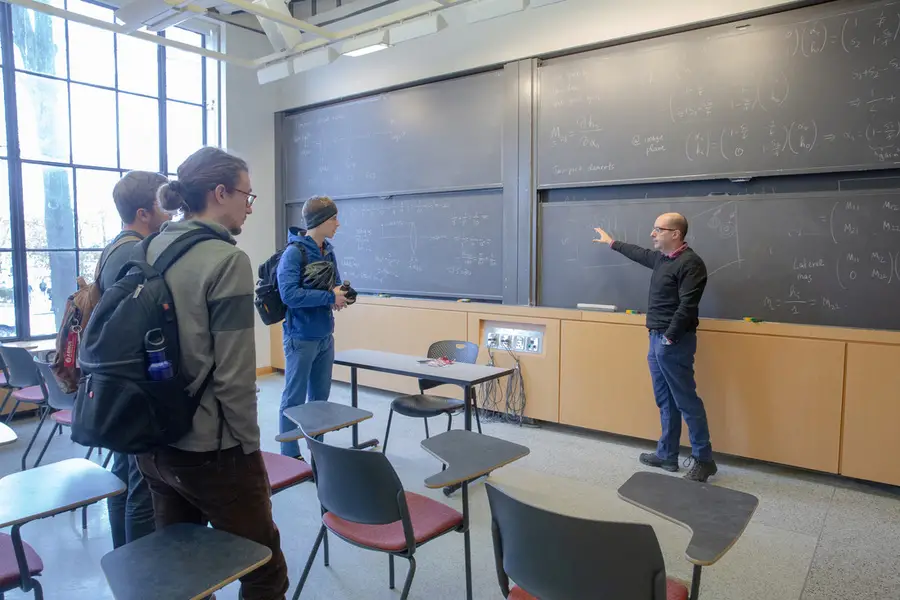
- Acceptance rate: 4%
- Average entry score: 1570 SAT or 36 ACT
- Student-to-faculty ratio: 3 to 1
- Estimated cost of attendance (tuition and fees): $77,570
- Average earning potential for graduates: $69,338 (College Factual)
The Department of Physics at MIT houses a wide array of research specialties that will leave you reeling.
From studying the secrets of the universe in astrophysics to tinkering with teeny-tiny particles in condensed matter physics, these physicists are always pushing the boundaries of what’s possible.
With cutting-edge facilities and top-notch mentors, the department is where the magic happens. If you’re looking to join the physics party, this is the place to be!
Source: MIT Department of Physics
What’s it like to study at MIT?
#2. Harvard University


- Acceptance rate: 4%
- Average entry score: 1460-1580 SAT or 33-35 ACT
- Student-to-faculty ratio: 7 to 1
- Estimated cost of attendance (tuition and fees): $76,963
- Average earning potential for graduates: $55,400 (College Simply)
Harvard Physics offers students a comprehensive education in the field, preparing them for a wide range of careers in academia, research, and industry.
With a dedicated faculty and state-of-the-art research facilities, students have the opportunity to engage in cutting-edge research projects and gain hands-on experience in experimental and theoretical physics.
The department fosters collaboration across disciplines—from engineering to computer science and biophysics.
Source: Harvard University Department of Physics
What’s it like to study at Harvard University?
#1. Stanford University

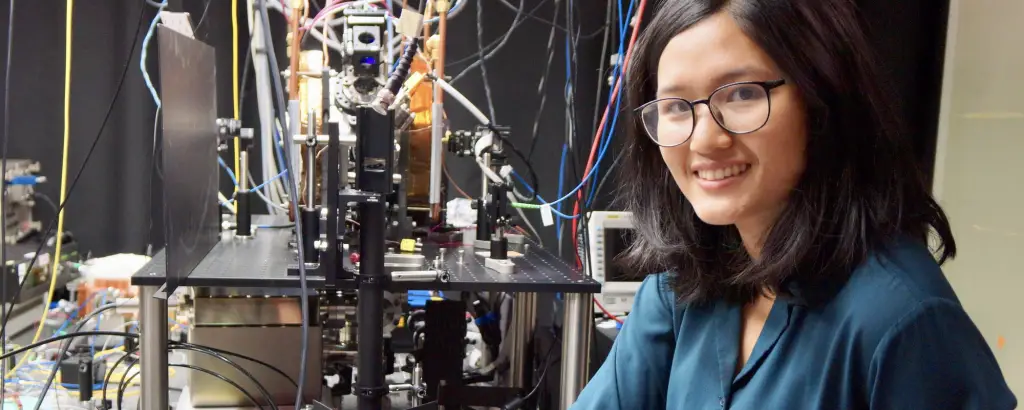
- Acceptance rate: 3.9%
- Average entry score: 1470-1570 SAT or 34-35 ACT
- Student-to-faculty ratio: 5 to 1
- Estimated cost of attendance (tuition and fees): $78,898
- Average earning potential for graduates: $55,960 (Grad Reports)
Stanford University is renowned for its exceptional physics program, consistently earning top rankings and producing groundbreaking research.
This institution boasts state-of-the-art facilities which enable students to conduct cutting-edge experiments and collaborate with leading scientists.
Stanford’s physics faculty comprises world-class researchers dedicated to fostering a culture of innovation, curiosity and excellence in their students.
The university’s curriculum emphasizes hands-on learning and encourages students to work on real-world projects.
Source: Stanford University Physics Department
What’s it like to study at Stanford University?
Conclusion
With this list of the best physics schools, you can rest assured that you will receive a top-notch education from some of the most prestigious institutions in the world.
Always consider factors such as location, research opportunities, and faculty expertise when making your decision.
Through hard work, dedication, and a strong foundation from one of these schools, you can achieve great success in the field of physics.
Selection Criteria
Here is a list of the factors we considered when selecting the best physics schools:
Please note that the order in this list might vary by ranking criteria and sources.
- Reputation and ranking of the school: We looked for schools that have a strong reputation and high ranking in physics.
- Faculty expertise, qualifications, and specialization: We researched the faculty members and their areas of expertise, and qualifications to ensure that the school has professors with relevant expertise and specialization in the areas of physics that are of interest.
- Curriculum and resources: We evaluated the curriculum to ensure it aligns with students’ interests and career goals and considered the quality of the school’s facilities and resources, such as labs, equipment, and libraries.
- Opportunities for hands-on learning and research: We looked for schools that provide opportunities for hands-on experience through internships, co-op programs, or fieldwork.
- Student support services and alumni network: We considered the availability of support services and the strength of the alumni network in providing mentorship, internships, and job opportunities after graduation.
- Extracurricular activities and diversity: We evaluated the availability of extracurricular activities and clubs that align with students’ interests and considered the school’s diversity and inclusivity.
- Networking and post-graduation support: We researched the school’s network of alumni and their post-graduation support for physics students, and also considered if the schools have a strong network of physics professionals and researchers.
Frequently Asked Questions
Q1. What are the best schools for physics?
The best include MIT, Harvard University and Stanford. You can also find some good schools on our list of the best colleges for physics majors.
Q2. What can I do with a Bachelor’s Degree in Physics?
A physics bachelor’s degree can lead to many different careers.
Some graduates go on to work as high school teachers, while others find jobs in industry or research laboratories. A few even become physicists themselves!
Q3. Are there any scholarships available for physics majors?
Yes, there are plenty of scholarships available for physics majors. You can search online or talk to your guidance counselor at school to learn more about the different types of scholarships and how to apply.
Q4. What are the requirements to become a physicist?
Physics is a very broad field, and there are different aspects of it that students can specialize in.
Generally, though, you will need to start with high school courses in math and science, then go on to college, where you’ll take courses in physics.
Q5. How can I find the right school for me?
The first thing you should do is take a look at our list of the best colleges for physics majors. From there, you can get an idea of where to start.
Then it’s time to do some research! Look into the different schools and see what they have to offer, such as their graduation rates, GPAs of students and more.
Make sure you find one that will help you reach your goals through education, experience with employers, internships and more.
References
[1] Official Websites
[2] Salary Data from Glassdoor, Grad Reports, College Factual, College Simply, Zippia
[3] Ranking references, including news media such as Best Global Universities for Physics in the United States.


